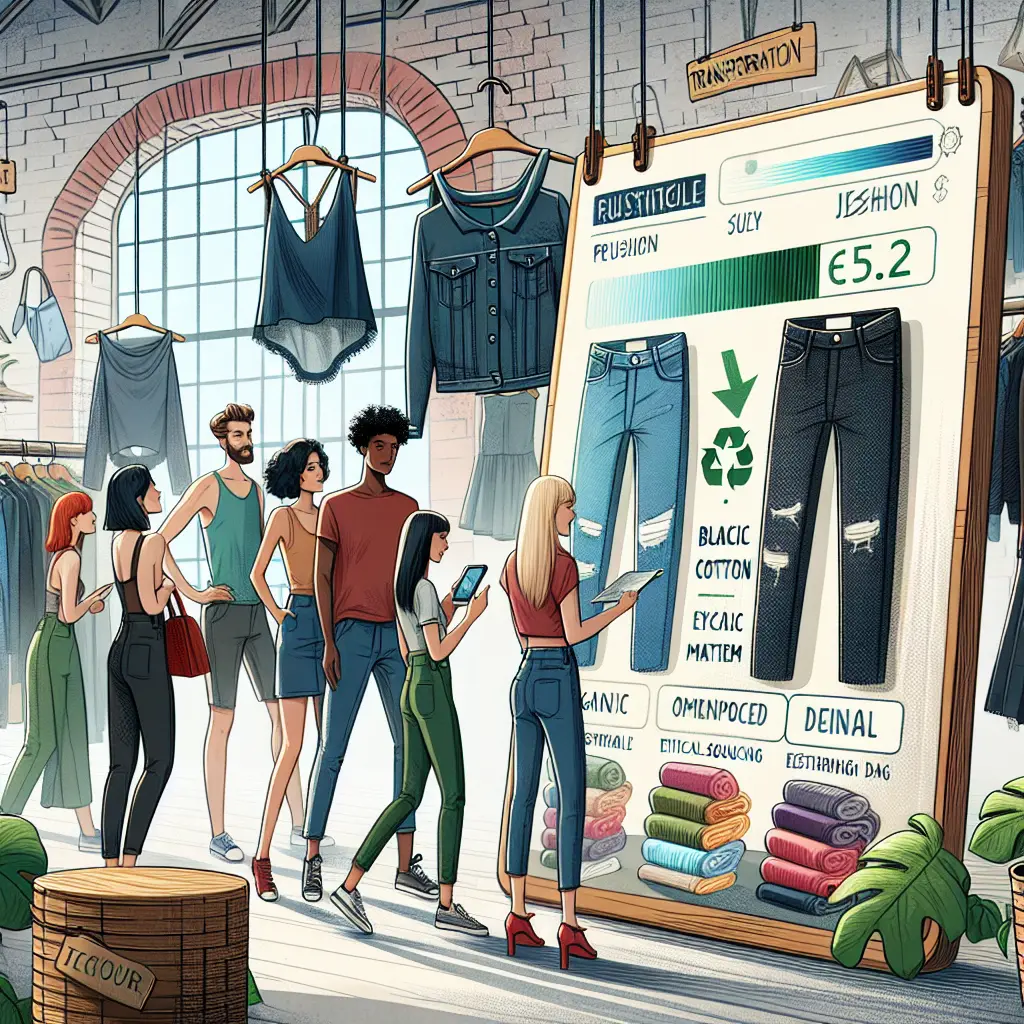
In the ever-evolving landscape of the fashion industry, a transformative shift is redefining how we perceive style and sustainability. Circular fashion in ethical clothing is not just a trend but a revolution. It intertwines the principles of the circular economy with the heart of sustainable fashion. As environmental concerns mount, conscious consumerism gains momentum, urging designers and consumers alike to embrace eco-friendly fashion practices that prioritize longevity and responsibility.
Circular Fashion: A New Paradigm for Sustainability
Circular fashion stands as a beacon of hope in a world striving for zero waste. It challenges the traditional linear model by advocating for a regenerative approach where recycled materials and upcycled clothing take center stage. This sustainable fashion trend paves the way for ethical fashion brands to thrive, encouraging innovation and creativity while minimizing environmental impact.
The Circular Economy: A Foundation for Sustainable Fashion
At the core of circular fashion lies the concept of a circular economy. Unlike the traditional linear model—where resources are used to make products, which are then discarded—the circular economy promotes a regenerative system. This involves designing out waste, keeping products and materials in use, and regenerating natural systems. By integrating recycled materials into fashion, brands are not only minimizing their environmental impact but also fostering innovation and creativity within the industry.
Ethical Clothing: A Response to Fast Fashion's Pitfalls
Despite growing awareness of fast fashion's detrimental consequences, overproduction and overconsumption persist. Many brands employ "woke" marketing tactics to appear environmentally conscious while continuing harmful practices. Ethical clothing stands as a crucial counterpoint by prioritizing transparency, fair labor practices, and environmentally friendly materials, genuinely reducing their carbon footprint and supporting industry sustainability (The Guardian on woke marketing).
Global Influences and Innovations in Circular Fashion
Danish Influence: Leading the Charge in Circular Fashion
Northern Europe, particularly Denmark, has become a hub for innovative circular fashion brands. Danish brands are redefining sustainable clothing by setting trends that emphasize quality over quantity—a core tenet of the slow fashion movement. This movement encourages mindful purchases, choosing timeless pieces crafted from sustainable materials that endure over time (Highsnobiety on Danish brands).
Innovation in Sustainable Design: The Case of Crescent Shay
Innovation is key to circular fashion's success. Crescent Shay’s creation of a glass-looking dress without a 3D printer exemplifies how creativity thrives within sustainable fashion trends. By using unconventional materials and techniques, designers like Shay offer new perspectives on how recycled materials can be both stylish and sustainable (Crescent Shay on YouTube).
Building Trust Through Ethical Business Strategies
As consumers become increasingly aware of their impact, ethical business strategies gain prominence. Brands that commit to sustainability through transparent practices and ethical marketing build lasting trust with consumers. This trust not only benefits the brand but also supports broader efforts towards sustainability (Forbes on ethical business).
Case Study: ID Genève Circular 1
A prime example of sustainable luxury is the ID Genève Circular 1 timepiece. This watch redefines luxury with recycled materials while maintaining high standards of craftsmanship. Such innovations highlight the potential for circular fashion to penetrate even exclusive markets, paving the way for other industries to adopt eco-friendly practices (ID Genève's Circular 1).
Challenges and Opportunities in Circular Fashion
While circular fashion presents opportunities for environmental improvement and innovation, challenges remain. Advanced technologies like Adobe’s AI-driven tools enhance design efficiency but must be implemented ethically (Adobe Photoshop). Addressing issues like carcinogenic risks associated with certain materials is also critical for ensuring health and safety (ScienceDirect on carbon fiber).
Engaging Consumers in the Circular Fashion Movement
Engaging consumers is crucial for driving change within the industry. Encouraging active participation through interactive marketing strategies fosters shared responsibility for our planet’s future. Using zero-party data can create privacy-conscious advertising that respects consumer autonomy while promoting sustainable choices (Harvard Business Review on zero-party data).
Conclusion: Embracing a Circular Future in Fashion
As we navigate the evolving landscape of fashion, circular fashion represents a pivotal shift toward sustainability and ethical practices. The commitment to a circular economy underscores the need for regenerative systems, moving beyond linear models. This transformation not only promotes environmental stewardship but aligns with John Rawls' vision of collective well-being and justice.
Ethical clothing counters fast fashion's pitfalls by emphasizing transparency, fair labor, and eco-friendly materials. The Danish influence highlights how conscious consumerism can lead to enduring choices. Innovations like Crescent Shay's designs showcase the creativity within sustainable fashion.
Brands committed to ethical business strategies build lasting trust with consumers, setting new industry standards. The success of products like ID Genève's Circular 1 timepiece exemplifies how luxury and sustainability coexist. While challenges remain, these hurdles present growth opportunities.
Engaging consumers is paramount in driving the circular fashion movement forward. Encouraging participation through thoughtful marketing strategies fosters responsibility for our planet's future. As we embrace this journey, we hold the power to shape a more inclusive industry.
Reflect on your wardrobe choices and their contribution to this collective endeavor. Engage with brands prioritizing sustainability, share your thoughts, and join the dialogue on creating a greener tomorrow. Let's redefine living a good life through conscious consumerism and sustainable practices.
Warm regards,
Fiona Sterling